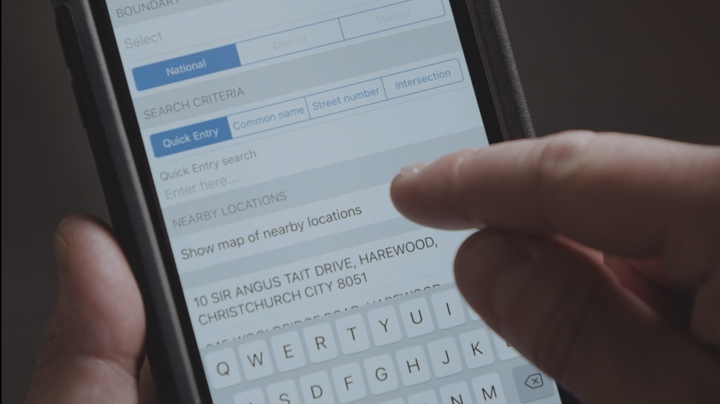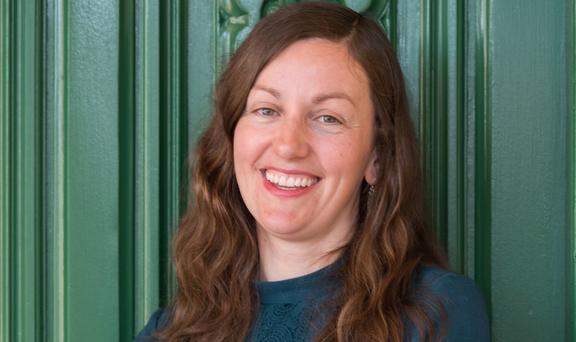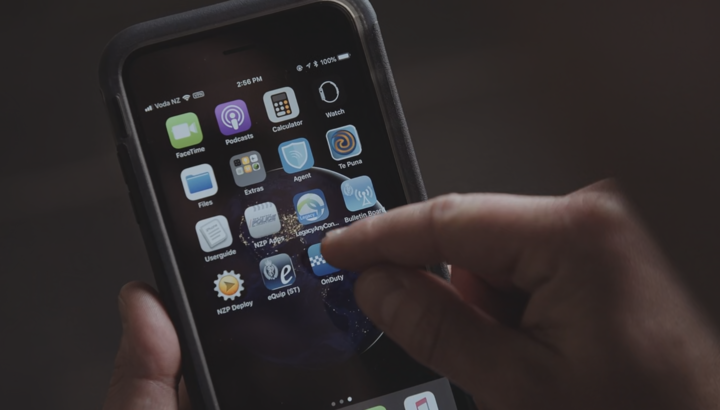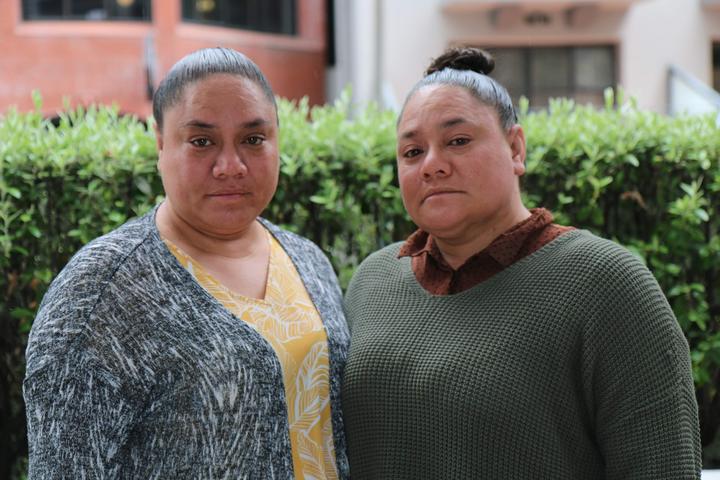Across the country, police are approaching innocent young people, photographing them, collecting their personal details and sending it all to a national database. But why, and what impact is this having on rangatahi?
Two young boys, 14 and 15, were alone when it happened to them.
They were standing outside Cash Converters on Whanganui's main street, waiting for their koro to finish looking in the store, when two policemen caught their eye. Before long, the officers were standing at their feet.
"Where's the bag of money you stole," one officer asked, nearly shouting.
The boys were surprised. And they were confused. They denied knowing anything about the stolen money, but that did not convince the men in uniform. Strangers driving past gawked out their windows as the officers explained they met the description of offenders they were looking for.
The boys' eyes darted back to the store where their koro was. For a moment, they considered calling out his name, but they didn't. The officers collected their details, and then they asked the boys to stand still.
"We're going to take your photo now," the officer said. "Take your hats off and look into the lens".
When it was over, the car ride home was silent. The boys sat together in the back seat and didn't tell their koro a thing.
But Naomi and Charlene Sadlier knew, as soon as they arrived home, that the boys were shaken. They scuttled through the front door, eyes wide with fear.
"Aunty" the oldest boy said. "The police took our photo."
What happened to the Sadlier sisters' nephews wasn't a one-off. Last year, RNZ reported that young Māori in Wairarapa had been stopped and photographed by police when they were walking along the street. RNZ can now reveal this was the tip of the iceberg. Across the country, police are approaching innocent young people, photographing them and collecting their personal details. Then, using a specially-designed mobile phone app, they are sending them to a national police database, which can be accessed by police staff in real time.
'Useful intelligence'

Photo: RNZ / Richard Tindiller
When frontline police officer Chris is working a shift, especially at night, young people are always at the back of their mind.
That is because Chris, not their real name, understands the type of crime youth are often involved in is tough to prosecute. Any information officers can collect on young people is considered "useful intelligence".
"If you're out, and there's a group of young people, you would strongly be encouraged to go and have a talk to them, 'a chat'.
"You're really pushed, particularly when you're a frontline police officer, to be submitting 'intel notings'. Basically, if you see something happening that you think might be useful intelligence, then you submit a brief about it over your mobile device and then that gets reviewed by your area intelligence team.
"You can attach one photograph to the noting, but there's an expectation that when it goes into the database, you should be attaching more."
These intel notings are recorded and submitted to the central database, National Intelligence Application, through a mobile app, OnDuty, which launched in 2016. As well as offering officers a way to record and submit intel notings, the app allows police to access, record and submit information on a range of offences and criminal activity such as traffic offences, burglaries and family violence. It's been hailed by police as an alternative to hefty paperwork and has been used by more than 9000 officers since its inception.
The police policy on intel notings is vague. According to its 2019 National Recording Standard, there are two ways an intel noting can be made. The first is when police have received a CrimeStoppers Report and are gathering information that might be useful in solving a specific crime. But when no criminal report has been received, officers can still create an intel noting "in situations where Police receive information and decide it is worthy of recording for intelligence purposes."
In most cases, Chris says, the young people officers collect intelligence on have no known link to an offence. Officers don't even need to be suspicious or concerned about their behaviour in order to initiate a conversation and make an intel noting.
"It can be any young person that you come into contact with," Chris says. "That's why it's so wrong."
The police policy says intel notings can include personal details, digital images, a description of clothing, where a person is sitting inside a vehicle or any numbers obtained from their mobile phones. There's also a tool to link people seen together in a single file.
A 2017 article in the police magazine Ten One, titled 'Well and Truly OnDuty', explains how an OnDuty intel noting works and why police prize them.
"Early on 19 June, Constable Regan Gray, of Queenstown, stopped a white Mercedes. He took details and completed an OnDuty noting," it says.
"When youths burgled two Arrowtown properties that evening and were seen getting into a white Mercedes, Queenstown staff identified them."
In that case, officers got their offenders, but what if the youths in the car never went on to commit an offence? Why gather information on rangatahi who haven't committed a crime and may never do so?
Chris says intel notings are considered necessary because they are used to solve crime where there is little evidence. Young people, Chris says, particularly those aged 14 to 16, are largely responsible for what police call 'volume crime', an area that is hard to prosecute.
Volume crime includes offences such as burglaries and car thefts, where often the only evidence left behind is "grainy CCTV footage". Even when there is forensic evidence, Chris says, it is often unhelpful because young people are less likely to have DNA recorded in the police system to match it with.
Intel notings allow officers to access information about who was in or around a specific area where an offence occurred. They remain on the police OnDuty app indefinitely. It also allows them to match CCTV footage of offenders with images they've captured on their phones, Chris says.
"It's all very wishy-washy," Chris says. "The way I remember being taught about it and the way I've been taught about it since is, anyone can take a photo of anyone in public. And then, if you push further, they'll say, 'well, you can always ask, of course you can ask'".
But it may not be just any youth police want intel on.
Chris has seen the same scenario play out time and time again during a shift; young Māori or Pasifika are stopped and photographed by officers, while young Pākehā are left alone.
"That's when all the structural racism and unconscious bias stuff comes in, because, obviously, it's not any young person you see, it's any Māori or Pasifika young person you see," Chris says.
"It's all that implicit bias and the perception that they are responsible for more of the volume crime."
RNZ has asked for an ethnic breakdown of youth intel notings, but police have yet to provide this information.
'Part of normal police practice'

The OnDuty app is used by more than 9000 police officers Photo: Supplied / smudge.com
Is new technology behind this wave of youth intelligence gathering? The police OnDuty app has certainly made it easy for officers to collect, save and share intelligence, but one whānau told RNZ their rangitahi was photographed as far back as 2014. Four former police officers have also confirmed photographing young people was widespread when they served.
One of them, who RNZ agreed not to name, last served in 2013 and said photographs were taken of young people that could be used at a later date in case the rangatahi ever committed a crime.
Youth were also photographed during former National Party MP Chester Borrows' time in the force, which ended in 1999.
"Candid photographs were taken of people, whether they be suspects or witnesses or whatever, it was really just part of normal police practice," Borrows says.
"By candid, I mean, people may have known or not known that they were being photographed. You might have been in a car, sitting outside of court just taking photographs of people coming to and from court. Just so you had a record of who was who in your community. You could use that for criminal intelligence for the investigation of crimes that might come in at a later date."
A legal and ethical quagmire
After seeing their nephews scuttle in the door, scared after their encounter with police, Naomi and Charlene Sadlier put the boys in the car and drove them to the Whanganui police station. When the officer who had photographed them emerged from a backroom "looking blaze and confident", Charlene demanded an apology, but it didn't occur to her to ask if what he had done was legal.

Nessa Lynch Photo: Victoria University
Can police photograph an innocent young person? The simple answer, as it turns out, is yes. But the real answer is, it's complex.
Dr Nessa Lynch, an Associate Professor at Victoria University of Wellington's Faculty of Law, is an expert in youth justice and says, in most circumstances, photographing anybody in public is allowed.
"Any citizen, including police officers, can take a photograph of someone else if they are in a public space and are not obstructing them in any way," she says.
"Unless someone's got a reasonable expectation of privacy, there's some nudity or they're getting changed, for example, then it is allowed."
But South Auckland lawyer Kingi Snelgar, who has spent the last three years representing youth offenders in Manukau, says police officers cannot speak to a young person without a parent or caregiver present.
"A police officer can't just approach a young person on the street and get a statement on a burglary, even if they explain that the young person is a suspect," he says. "Under the Oranga Tamariki Act an adult or sometimes even a Justice of the Peace must be present."

Kingi Snelgar. Photo: supplied
He is alarmed that whānau have told RNZ their teenage sons or nephews were first spoken to in relation to a crime before their photograph was taken.
"If you can't take a statement from a young person unless an adult is present, then why shouldn't the same apply to things like photographs and other evidence gathering?"
Still, both lawyers agree there are gaps in the law around surveillance and police powers in public places.
But, legal or not, Karaitiana Taiuru, who has completed a PhD in indigenous ethics in data collection, is "horrified". He says there is a clear power imbalance at play any time a police officer approaches a young person without a parent or caregiver present.
He remembers as a young man, he felt obliged to follow police officers' instructions or agree to their requests, simply because they were in a position of authority.
"If a police officer wanted something, I mean, you just feel compelled to do it," he says.
"Young people know there are quite often consequences. Or they think they can't say no to the police, because they're too scared."
He believes, for young Māori, that power imbalance is even greater because of the historically fraught relationship police have had with Māori, and the overrepresentation of Māori in the criminal justice system.
"It's easier just to say yes to authorities, like the police, to avoid further harassment or being targeted more."
He says his research shows Māori are already overrepresented in police databases for voluntary DNA samples, and he suspects the same will be the case for photographs taken under the intel noting system.
Racial profiling
It's no surprise to Juan Tauri that all seven youth who have told RNZ they've been photographed were Māori. The Waikato University crimonologist says there's a term for what appears to be happening here: racial profiling.
"The significant concern here are the reasons police are giving for stopping young Māori. If there is no reasonable evidence to suggest someone has committed a crime, and they are only stopping young people because they match the rough description of 'young and brown', then that is racial profiling."
Without data to compare how many times Pākehā youth have been photographed by police, Tauri says it will be difficult for some to see whether or not bias is at play. But he strongly suspects it is an underlying factor.
"If we have a situation where we've got many Māori families informing us that this is being carried out, not just in Wairarapa but more widely, then there is anecdotal evidence that we have an issue here in relation to the police targeting young Maori."
Racial profiling and police bias are issues some of the country's greatest legal minds, including Dr Moana Jackson and Khylee Quince, have been discussing for years. And there's a mountain of research to suggest both issues have a long history in Aotearoa.
A study published last year by justice advocacy group JustSpeak found that if you're Pākehā, have no criminal record, and encounter police, you are less likely to be charged or sent to court than someone who is Māori. It found police are nearly twice as likely to take legal action against Māori than Pākehā, and seven times more likely to charge a Māori person with a crime, even when that person has no police record.
It backs up earlier research on police bias by an array of New Zealand scholars, including the late Professor David Fergusson. In 1993, the Otago University psychologist found Māori and Pacific Island children were 2.9 times more likely than Pākehā children to come to the attention of the police.
Gabrielle Maxwell and Catherine Smith, from the Institute of Criminology at Victoria University, found, in 1998, that one third of police officers had a higher tendency to suspect Māori of an offence, and nearly half were more likely to pull a vehicle over if that vehicle was "flash" and a Māori person was seen behind the wheel.
Police refuse to speak

The police OnDuty app Photo: Supplied / smudge.com
Police refused to speak to RNZ for this story.
The Independent Police Conduct Authority and the Privacy Commissioner are already investigating youth photographing after RNZ reported rangatahi in Wairarapa had been photographed. The police have also recently launched an internal review into their policy to see whether it is being applied correctly across the board.
Faced with fresh allegations, police released a statement saying the intel noting system does not specifically target any group of people.
"Intel notings can be made regarding any person.The intel noting system allows officers to record observations they believe are relevant to the fulfilment of Police functions, and in particular to the maintenance of public safety.
"New Zealand Police legislation and policy allows for photos to be taken of young people in limited circumstances including under Section 214 of the Oranga Tamariki Act 1989.
Police has given an undertaking to review its practises nationally regarding the recording of photographs of young people as a tool for investigating crime in the community."
In a response to an RNZ Official Information Act request, police said photographs of children and young people could legally be retained when taken as part of the arrest or summons process, or when they had taken what they called "a voluntary set".
Police say the policy relating to the storage, retention and destruction of voluntarily taken photos will form part of the review currently underway.
A traumatic experience
Charlene Sadlier looked the officer who had taken photos of her newphews in the eye and said, "We are here for an apology because our boys came home and they felt whakamā and embarrassed that you took their picture in front of everyone. I want these boys to know that you are here to keep them safe'".
Her nephews stood quietly at her side with their heads down. She says the officer was defensive, and explained that he was just doing his job. But he did, eventually, apologise.
"The boys were the first to make the move to shake his hand. I was really proud of our boys for doing that. We left it there, but now there's a part of me that wants to know where their photos are. Are they keeping those photos just in case they ever slip up?"
Police told RNZ the officer has no recollection of the event. They say the boys' photographs cannot be found on any police database. But the Sadlier sisters are not convinced.
"They need to find a way to assure us that those pictures that they took of our nephews, and anybody else's children, are either returned to us or wiped off," Charlene says.
"I'm especially concerned about the other rangatahi they've done this to. There might be, say, 20 others or so. Well, that's a whānau, a hapū and an iwi that is left to pick up the pieces. But how do we pick up those pieces? How do we teach our rangatahi, after an experience like that, to be proud of who they are?"
She struggles to talk about their experience, pausing every few seconds to hold back tears as she describes how the boys behaved in the days that followed.
"They wouldn't leave each other's side after the incident. They slept next to one another, ate together and sat together," she says.
"They'd say things like, 'I hate the police,' or 'f*** the police'. We don't teach our children to swear, but that's how they retaliated.
"The healing process took months. The youngest was uneasy about going back because he thought the police were gonna come for us. That told me he was traumatised by the experience.
"It makes me angry, because they are children of the Whanganui river. Both boys whakapapa there. They were vulnerable and they were by themselves."






